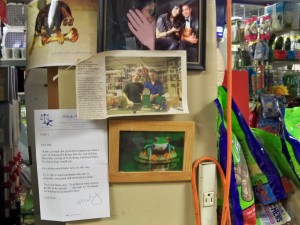Taking Disney Captive to Christ – No. 5
Maleficent opened in theaters three weekends ago as a tantalizing twist on a timeless tale; innovative, visually stunning, well-acted, provocative…and dangerously wrong!
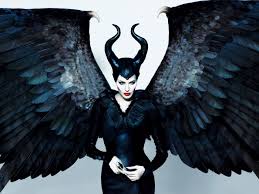
(spoiler-alert! this article reveals plot details)
As a Literature major at Wheaton College in Chicago, I studied Folk Literature under Gary Rundquist, and learned that “The Sleeping Beauty in the Wood” is a centuries-old fairy tale in which an evil and envious fairy named Maleficent curses the infant Princess Aurora, sentencing her to die by finger prick on her 16th birthday. Good fairy Merryweather ameliorates, but cannot undo, the curse; Aurora will not die, but only sleep for 100 years, or until awakened by true love’s kiss. The whole kingdom will sleep as well to spare them the agony of her absence.
Before we go forward, let’s be clear on a fundamental literary reality: fiction does not always equal falsehood, and non-fiction does not always equal truth.
Though fictitious, the main purpose of fairy tales is to convey universal moral truths in an entertaining and memorable fashion. A fairy tale consists of a simple narrative dealing with supernatural beings, told for the amusement (mostly) of children (but also for adults).
Throughout the ages, names have been extremely important in fairy tales, as they are in the Bible. “Maleficent” means, “being, and wanting to do, evil; harmfully malicious.” This is her name. This is who she is. She is not a human woman. She is an evil fairy; a supernatural character.
In Disney’s latest iteration, Maleficent starts out pure and innocent, then becomes evil because of mistreatment, only to redeem herself and become good again. But there is no truth in that tale! Supernatural characters, such as fairies and trolls are literary representations of the very real spiritual powers and principalities at work in our world. Some are good. Some are evil. But none are both beneficent and maleficent.
In the works of J.R.R. Tolkein (ie. the Lord of the Rings trilogy), all supernatural characters are either good or bad, while human characters are both good and bad – in keeping with clear Bible teaching.
The only supernatural beings who ever supposedly started out good and chose to become evil are the pridefully rebellious archangel Lucifer (better known as Satan or the Devil) and those angels who followed him in the fall (demons). “So the great dragon was cast out, that serpent of old, called the Devil and Satan, who deceives the whole world; he was cast to the earth, and his angels were cast out with him.” (Revelation 12:9) As harsh as it might seem from our limited earthly perspective, there’s no going back, no redemption, for them.
Fairy tales have always been malleable; stamped with a timeless literary admonition “Bend, but do not break.” Most of the fairy tales we know – Cinderella, The Little Mermaid, Beauty and the Beast, etc. – have existed in a variety of forms, some much more violent than their modern counterparts, while retaining a central moral message.
Disney’s uplifting and powerful 1959 animated classic got it right; clearly portraying that virtue, truth, and righteousness will overcome the forces of evil.
Prince Phillip (the Christ figure in the story because he puts his life on the line for Princess Aurora and the whole cursed kingdom – greater love has no man…)  is outfitted for the deadly battle by the good fairy Flora, who says, “Wait, Prince Phillip. The road to true love may be barred by still many more dangers, which you alone will have to face. So arm thyself with this enchanted Shield of Virtue, and this mighty Sword of Truth, for these weapons of righteousness will triumph over evil. Now come, we must hurry.” (His shield clearly bears a cross)
is outfitted for the deadly battle by the good fairy Flora, who says, “Wait, Prince Phillip. The road to true love may be barred by still many more dangers, which you alone will have to face. So arm thyself with this enchanted Shield of Virtue, and this mighty Sword of Truth, for these weapons of righteousness will triumph over evil. Now come, we must hurry.” (His shield clearly bears a cross)
During their fight, Maleficent further reveals her true nature by invoking the powers of hell and transforming into a gigantic, fire-breathing dragon. This same creature appears nightly on the Rivers of America at Disneyland during the Fantasmic show. It is a frightening sight. Here’s how the scene plays in the 1959 animated feature:
[Prince Phillip cuts through the forest of thorns and rides toward King Stefan’s castle]
Maleficent: No! It cannot be!
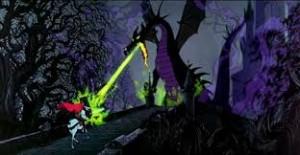 [transforms herself into a whirlwind and appears in front of Phillip, blocking his path]
[transforms herself into a whirlwind and appears in front of Phillip, blocking his path]
Maleficent: Now, shall you deal with ME, O Prince – and all the powers of HELL!
[laughing, she transforms herself into a huge dragon; Phillip charges]
 Prince Phillip defeats the dragon with his weapons of righteousness (see Ephesians 6), and, having proven his selfless love, overcomes the curse and awakens (resurrects) the princess and the kingdom.
Prince Phillip defeats the dragon with his weapons of righteousness (see Ephesians 6), and, having proven his selfless love, overcomes the curse and awakens (resurrects) the princess and the kingdom.
In the 2014 retelling, Maleficent does not turn into a dragon, but rather orders her crow to play that part (perpetuating the charade that she is good deep down inside). In 2014, Prince Phillip is superfluous, not fighting for Aurora, and not wanting to kiss her because he just met her (a good point to make, but out of context with the deeper meanings of the classic story). Once he does kiss her, she remains asleep. Apparently there is no such thing as true love to break the spell. But wait, the much-maligned Maleficent’s matronly forehead kiss does wake Aurora! And so, the one who suffered so, and whose evil is therefore justified, the one who cursed Aurora to death in the first place in a fit of rage, becomes the blessed one who resurrects her. Isn’t that nice?
The End. Clap-clap-clap.
Trailers for the film tease audiences with, “you know the tale; now find out the truth.” One can almost hear the hisses in Eden, “Did God really say…?” (see Genesis 3)
Maleficent 2014 is dangerously wrong because it is beautiful, heart-wrenching, compelling, and as such, deadens our discernment to the reality that maleficent supernatural beings will always seek our harm, are never to be trusted, given hospitality, or even pitied, but rather are to be called what they are and opposed to the death with weapons of righteousness.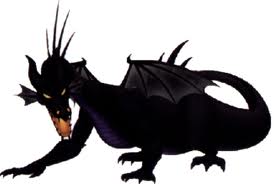 The Thinking Christian Woman is not ignorant of the Serpent’s (Dragon’s) disguises and devices (2 Corinthians 2:11). The Thinking Christian Woman knows that “the weapons of our warfare are not carnal but mighty in God for pulling down strongholds, casting down arguments and every high thing that exalts itself against the knowledge of God, bringing every thought into captivity to the obedience of Christ…” (2 Corinthians 10:4-5)
The Thinking Christian Woman is not ignorant of the Serpent’s (Dragon’s) disguises and devices (2 Corinthians 2:11). The Thinking Christian Woman knows that “the weapons of our warfare are not carnal but mighty in God for pulling down strongholds, casting down arguments and every high thing that exalts itself against the knowledge of God, bringing every thought into captivity to the obedience of Christ…” (2 Corinthians 10:4-5)
Maleficent 2014 opens with the tantalizing words, “this isn’t the story you’ve been told.” What it never admits is that we have not been told this story because it has no lasting value, no central truth, no life-giving lesson.
Maleficent 2014 attempts to exalt itself against the knowledge of God. The goal of this article is to bring it captive to the obedience of Christ.

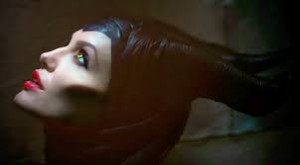
Whether you have seen the movie or not, I would be interested in your thoughts. Please feel free to leave a comment.
© 2014 Melody K. Anderson
All Rights Reserved
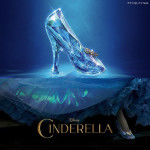 In 1697, Charles Perrault wrote a French once-upon-a-time called Cendrillon, based on a well-known oral tradition in which a young girl, who is as good and kind as she is lovely, endures severe hardship and heartache before her long dark storm of injustice clears and her rainbow comes shining through.
In 1697, Charles Perrault wrote a French once-upon-a-time called Cendrillon, based on a well-known oral tradition in which a young girl, who is as good and kind as she is lovely, endures severe hardship and heartache before her long dark storm of injustice clears and her rainbow comes shining through.












